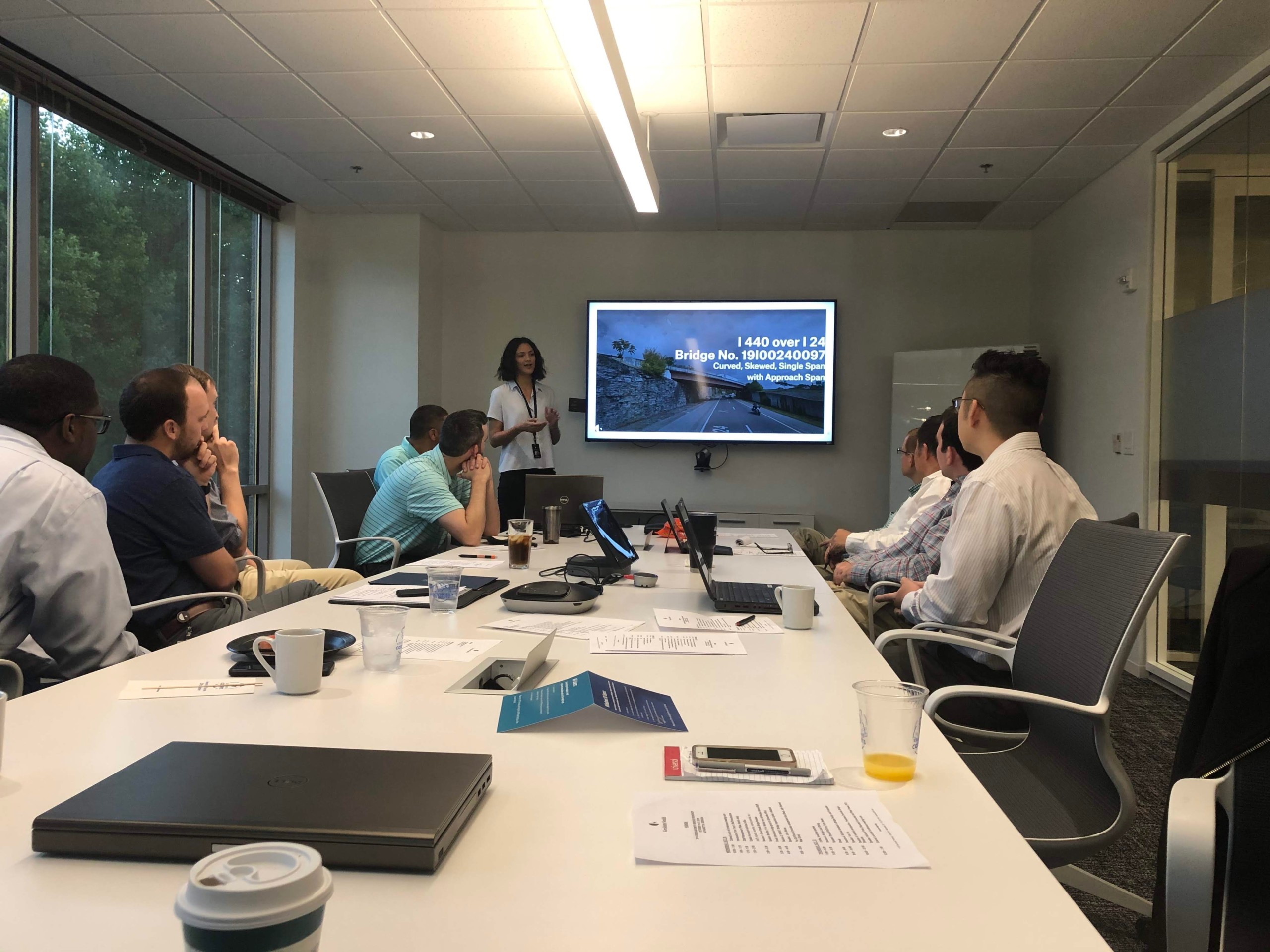It probably goes without saying that the primary function of a bridge designed to carry traffic loads is to safely support the weight of that traffic—especially heavy-load cases such as large emergency vehicles, large tractor-trailers and construction equipment like gravel and dump trucks. But did you know that each state in the United States is required to inspect their bridges every two years to determine deficiencies or deterioration in order to comply with federal standards?
Along with these biennial inspections, bridge load ratings must also be performed to determine the safe loading capacity of a bridge in accordance with the AASHTO Bridge Evaluation Manual.
Under an on-call contract for bridge repair services with Tennessee Department of Transportation (TDOT), Gresham Smith was selected to load-rate a variety of in-service bridges across the state, including 89 of Tennessee’s most complex bridges in Nashville, Memphis, Knoxville and Chattanooga that are anything but your typical bridge structures.
complex bridges
total contract value
team members across 4 Gresham Smith offices
Weighing Up the Options
Utilizing Finite Element (FE) modeling, Refined Analysis and post-processing automation, our Transportation group produced thorough reports—and explanations of their results—for TDOT and the Federal Highway Administration (FHWA) on the existing vehicular weight capacity of the 89 bridges across the Volunteer State.Based on the results of the reports, TDOT determined whether to leave any given bridge structure operating as-is, or if it needed to be strengthened, load-posted for weight limitations or even closed to traffic if the bridge was deemed beyond repair—helping keep these vital structures safe for the transportation of people and goods across the state.
A Fast-Track, Collaborative Effort
As part of four separate projects, our scope of work involved load rating for design, legal and permit vehicles. The industrial average for this type of bridge-load rating typically takes around one to four weeks to complete.Across four Gresham Smith offices, it took our multidisciplinary team of 16 just 12 months to complete their evaluation of the 89 Tennessee bridges. Each team member was critical to the success of the project.
Creating Superstructure Models
To analyze the assigned in-service bridges, the team developed a Finite Element computer model of each of the superstructures using existing construction plans that TDOT had on file. The team then modeled trucks within CSiBridge software (based on permit vehicles that TDOT allowed owners to operate on the bridges), which were loaded onto the 3D structure.With the truck’s weight, wheel-spacing, length, width and number of wheels determined, a simulation of the vehicle was run across the bridge, showing how the loads were distributed throughout the structure and how much force each component experienced.
The bridge’s capacity was then analyzed, taking into consideration any deterioration that might have occurred over time to its various components.
An Ongoing Relationship
The bridge load ratings involved the use of load and resistance factor rating methodology utilizing advanced analysis techniques in the structural models. In addition to FE Modeling, the team also used a Refined Analysis approach to determine the lane-load and live-load distribution to the elements. The benefits of this method included a more accurate representation of the actual demand on the existing bridge structures.As a result of this project, Gresham Smith has developed a strong and trusted relationship with TDOT’s Load Rating group. We have been tasked with an ongoing and long-term intent to augment the state’s current staff to provide additional load ratings for bridges across the state.
Adding efficiency and accuracy to the evaluation process, our Bridge group has developed an automated program that gives our engineers more time to optimize their model, therefore reducing error associated with processing large amounts of data.
Project Contact
Our team develops creative solutions for the world's toughest infrastructure problems.
Learn more about our Engineering expertise.








